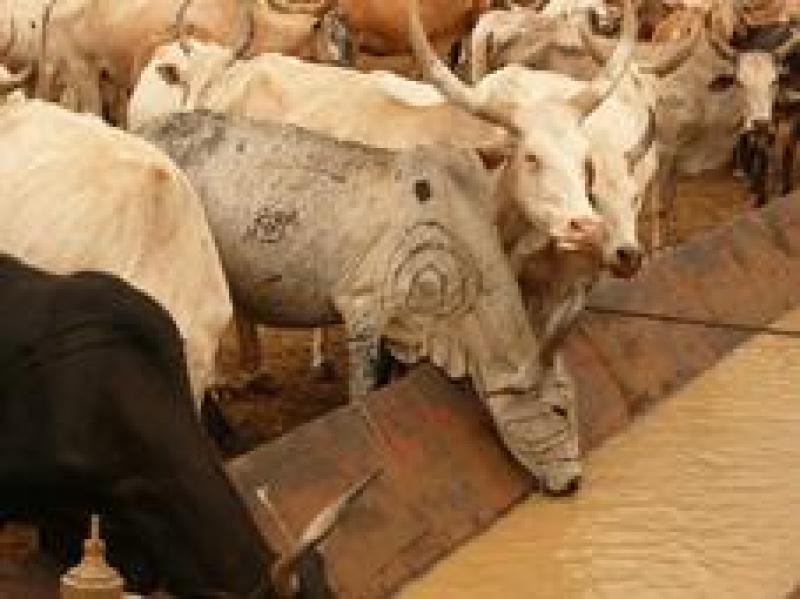

Kapoeta, South Sudan - Inter-communal violence over access to water has been a fact of life for the Toposa. In 2012, however, something changed in the lives of the Toposa residents of Jie, Kapoeta East County. For the first time in their memory, they did not have to migrate in search of water. (Read more)
SSRF Supports Conflict Mitigation in South Sudan (Contributed by Mike Mckie)
The South Sudan Recovery Fund (SSRF) supported the construction of a 30,000 cubic- meter, man-made lake, known locally as a haffir. This was delivered by UNDP’s implementing partner, Pact Sudan, as one of several outputs of the $19.8 million SSRF Joint Stabilization Programmme for Eastern Equatorial being implemented by UNDP and UNOPS. The basis for this intervention was UNDP’s Community Security and Arms Control (CSAC) project. Through a series of consultations with communities in each county across Eastern Equatoria, the CSAC project, in collaboration with state and local governments, identified the criticality of water in community security in Kapoeta North and South counties.
Haffirs are not a new concept to the Toposa communities of Kapoeta, as they have been hand-digging such reservoirs on a micro-scale. Man-power alone has never been enough to satisfy a community’s demand for water through the dry season for both human and livestock consumption. The ground water table is practically non-existent in many parts of Kapoeta where traditional, hand dug haffirs would run dry. As the intensity of the dry-season emerged, communities would migrate in search of scarce sources of water, often causing tensions between communities and leading to violent conflict.
Inter-communal violence over access to water has been a fact of life for the Toposa. In 2012, however, something changed in the lives of the Toposa residents of Jie, Kapoeta East County. For the first time in their memory, they did not have to migrate in search of water. The reason for this dramatic change in seasonal behaviour is that they now have access to a 30 million litre reservoir of water, financed by the SSRF. Starting late in the 2011 dry season, the haffir in Jie was completed sufficiently to fill and hold water when the rains came. By not migrating, this also means that for the first time, the prospect of violence has not been a reality for the pastoralist livelihood of the Toposa. UNDP’s implementing partner, Pact Sudan, recently recorded the Toposa of Jie as saying “if [the haffir] had not been constructed, [we would not] have remained in our settlements and the dry season would have caused much suffering for us”.
Although there is sincere gratitude in Jie, the best is yet to come. Three more haffirs will be completed in the Kapoetas this dry season. There is room to be cautiously optimistic in what the future holds for the Toposa of the Kapoetas in the 2012-13 dry season, as they benefit from a reliable water source to support their pastoralist livelihoods. What is more, there is evidence that now demonstrates haffirs have gone a long way to mitigating conflict in the Kapoetas; and that constructing more in other water scarce parts of South Sudan may just deliver the same benefit.
The SSRF is administered by the MPTF Office with total funding of $117 million from the Governments of the United Kingdom, the Netherlands and Norway.
To learn more about the SSRF, please visit: http://mptf.undp.org/factsheet/fund/SRF00